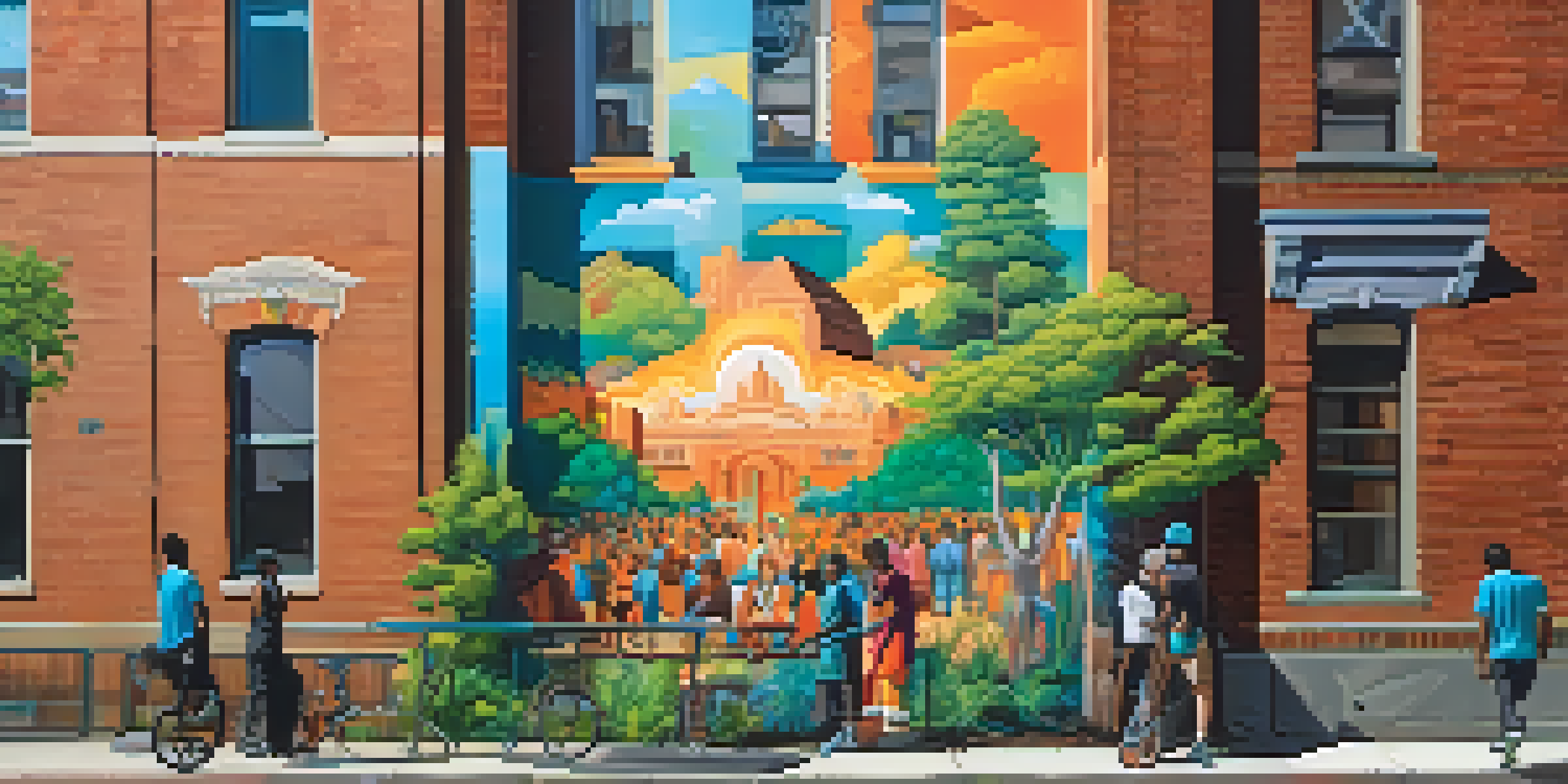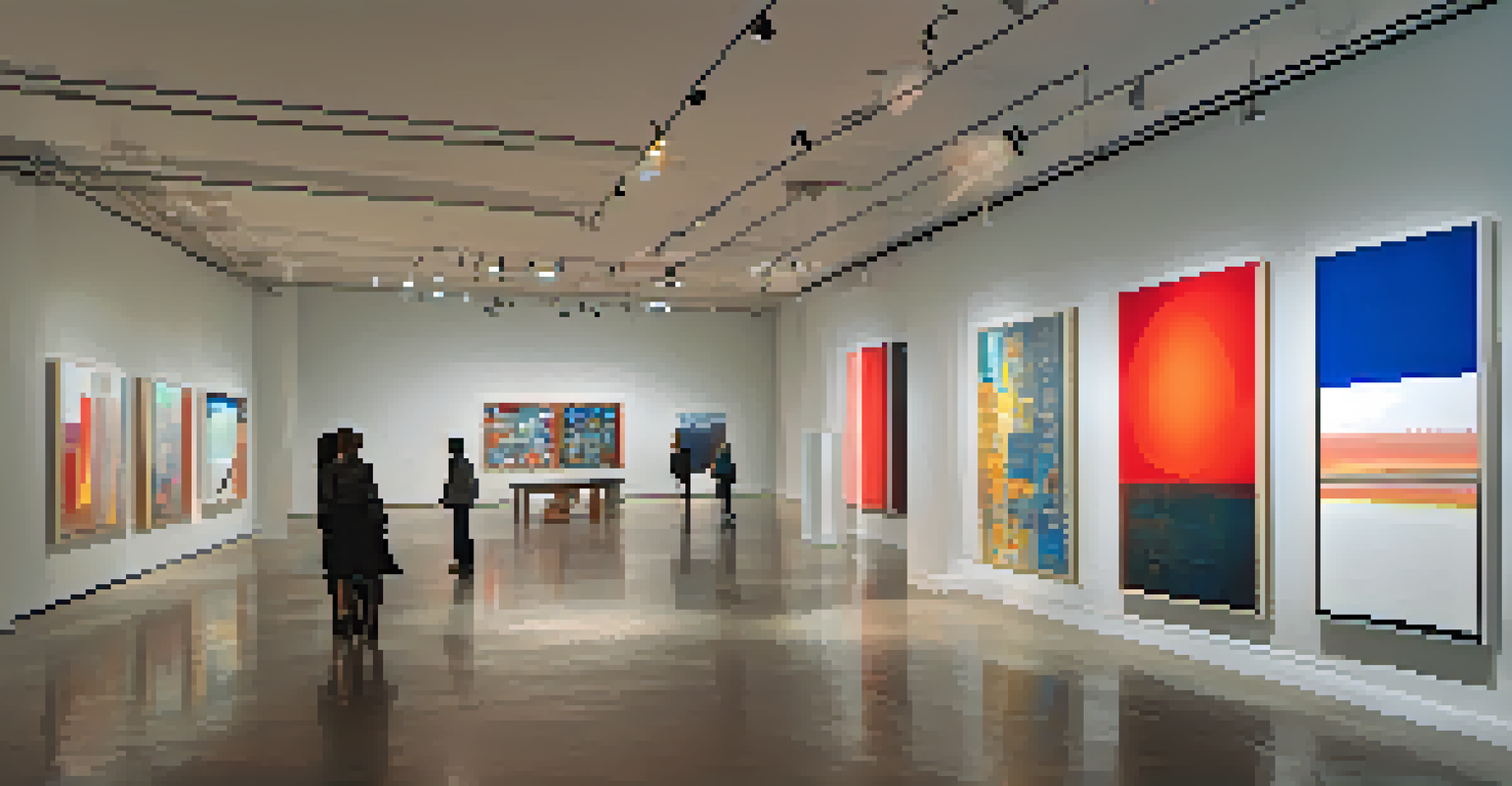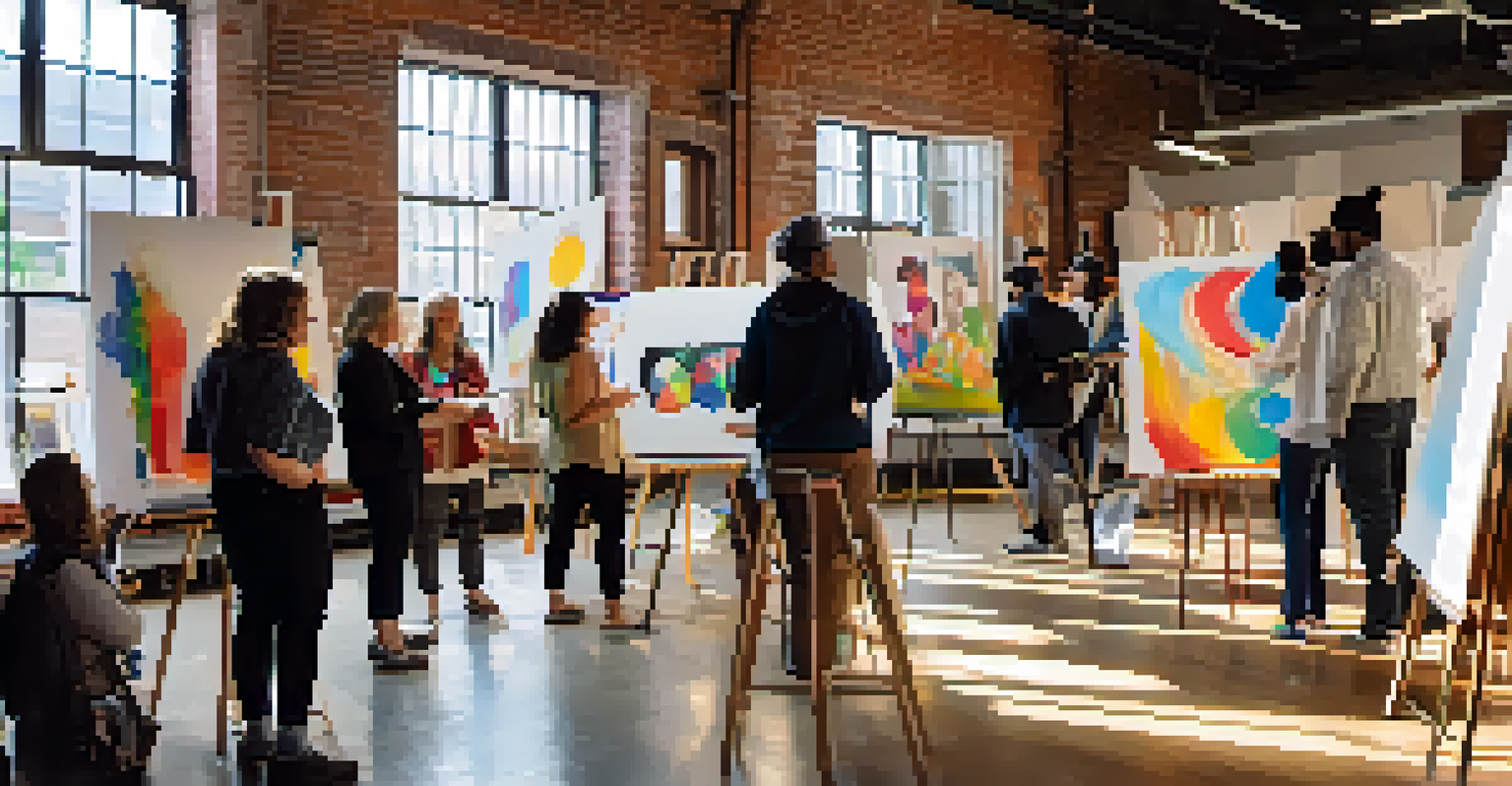How Detroit's Art Galleries Reflect the City’s Culture

The Historical Roots of Detroit’s Art Scene
Detroit's art scene is steeped in history, tracing back to its industrial roots. The city's rich tapestry of cultural influences, from African American to Native American, has shaped its artistic expressions. Galleries throughout the city serve as time capsules, preserving the legacy of past movements while fostering contemporary artists.
Art is not a thing, it is a way.
For instance, the Detroit Institute of Arts houses pieces that reflect the city’s diverse heritage, including works from the Harlem Renaissance. These historical connections help visitors appreciate how art has evolved, mirroring the city’s transformation over the decades. Understanding this backdrop is crucial for grasping the essence of Detroit’s current artistic landscape.
In this way, the galleries not only showcase art but also tell the story of a city that has continually reinvented itself. Each brushstroke and sculpture echoes the struggles and triumphs of its people, creating a narrative that resonates deeply with residents and tourists alike.
Showcasing Local Talent: A Hub for Emerging Artists
Detroit’s galleries are more than just exhibition spaces; they are incubators for emerging artists. Many galleries, like the Motor City Wine Gallery, focus on local talent, providing a platform for new voices to be heard. This commitment to nurturing artists fosters a vibrant community where creativity flourishes.

Moreover, these spaces often host events, workshops, and open mic nights, encouraging collaboration among artists and the public. Such initiatives help build a sense of belonging and pride, reinforcing the idea that art is accessible to everyone. This grassroots approach allows fresh perspectives to shine, enriching the city’s cultural fabric.
Detroit's Art Scene Reflects History
The city's art scene is deeply rooted in its diverse cultural history, showcasing a rich legacy that informs contemporary artistic expressions.
As a result, visitors can experience a diverse range of art that reflects the current zeitgeist of Detroit. From bold street art to intimate installations, the galleries serve as a mirror to the city's evolving identity, showcasing the stories and struggles of its artists.
Art as Activism: Reflecting Social Issues
Art in Detroit often serves as a vehicle for social commentary, addressing pressing issues like inequality and gentrification. Galleries frequently feature works that challenge viewers to reflect on these themes, prompting important conversations about the city’s future. This intersection of art and activism is particularly poignant in a city with such a rich history of social movements.
Every artist dips his brush in his own soul, and paints his own nature into his pictures.
For example, the work of local artists often highlights the struggles faced by marginalized communities, making their voices heard through powerful imagery. This not only raises awareness but also encourages solidarity and action among residents. The galleries become spaces for dialogue, where art ignites passion and informs change.
By engaging with these social issues, Detroit’s art scene contributes to a broader cultural discourse. The galleries become more than just places to view art; they become hubs for community engagement and advocacy, reminding us that creativity can inspire real-world change.
The Role of Public Art in Detroit’s Identity
Public art plays a crucial role in shaping Detroit’s identity, transforming the city into an open-air gallery. Murals, sculptures, and installations dot the urban landscape, reflecting the city’s history and community spirit. This accessibility invites everyone to engage with art, breaking down barriers that traditional galleries may inadvertently create.
For instance, the famous Detroit Mural Project has revitalized neighborhoods, turning blank walls into vibrant canvases. These works often celebrate local culture, history, and figures, making art a communal experience. As residents and visitors stroll through the streets, they encounter narratives that resonate with their own experiences.
Galleries Nurture Emerging Artists
Detroit's galleries serve as vital incubators for local talent, creating a supportive community where new voices can thrive.
Public art not only beautifies the city but also instills a sense of pride among its inhabitants. By integrating art into everyday spaces, Detroit fosters a dynamic cultural environment where creativity is woven into the fabric of daily life.
Diversity of Mediums: A Feast for the Senses
Detroit's art galleries showcase an impressive array of mediums, offering something for everyone. From traditional paintings and sculptures to multimedia installations and performance art, the diversity reflects the city’s eclectic spirit. This variety not only enhances the viewer’s experience but also highlights the innovative approaches artists take in their work.
Visiting galleries like the Contemporary Art Institute of Detroit exposes audiences to cutting-edge art that challenges perceptions. The fusion of different artistic styles and techniques encourages dialogue about what art can be, pushing boundaries and exploring new ideas. This sense of experimentation is part of what makes Detroit’s art scene so captivating.
As visitors navigate through these spaces, they encounter a sensory adventure that stimulates curiosity and imagination. The interplay of colors, textures, and sounds creates an immersive experience, inviting viewers to connect with the art on a deeper level.
Community Engagement: Art and the People
Community engagement is at the heart of many Detroit galleries, emphasizing the idea that art belongs to everyone. Many galleries actively involve local residents in the creative process, whether through collaborative projects or community workshops. This participatory approach fosters a strong connection between artists and the public, making art a shared experience.
For example, initiatives like the Detroit Arts Council often sponsor community events that celebrate local creativity and culture. These gatherings not only showcase artistic talent but also strengthen community bonds, creating a supportive network for artists and art lovers alike. Such interactions help demystify the art world and invite everyone to participate.
Art as a Tool for Social Change
Art in Detroit often addresses pressing social issues, fostering dialogue and community engagement while inspiring action among residents.
By prioritizing community involvement, Detroit’s galleries become catalysts for social cohesion and empowerment. They remind us that art is not just for connoisseurs; it’s a vibrant part of everyday life, accessible to all who wish to engage with it.
The Future of Detroit’s Art Galleries
As Detroit continues to evolve, so too does its art scene, with galleries adapting to the changing landscape. The rise of digital art and technology is influencing how artists create and share their work, leading to exciting innovations. Galleries are increasingly incorporating technology, providing virtual tours and online exhibitions to reach a broader audience.
Simultaneously, there’s a growing emphasis on sustainability and social responsibility within the art community. Many galleries are exploring eco-friendly practices and supporting artists who focus on environmental themes. This shift not only benefits the planet but also aligns with a growing public interest in mindful consumption and ethical practices.

Looking ahead, Detroit's art galleries are poised to play a pivotal role in shaping the city’s cultural narrative. By embracing new ideas and fostering inclusivity, they will continue to reflect the dynamic spirit of Detroit, ensuring that art remains a vital part of the community's identity.